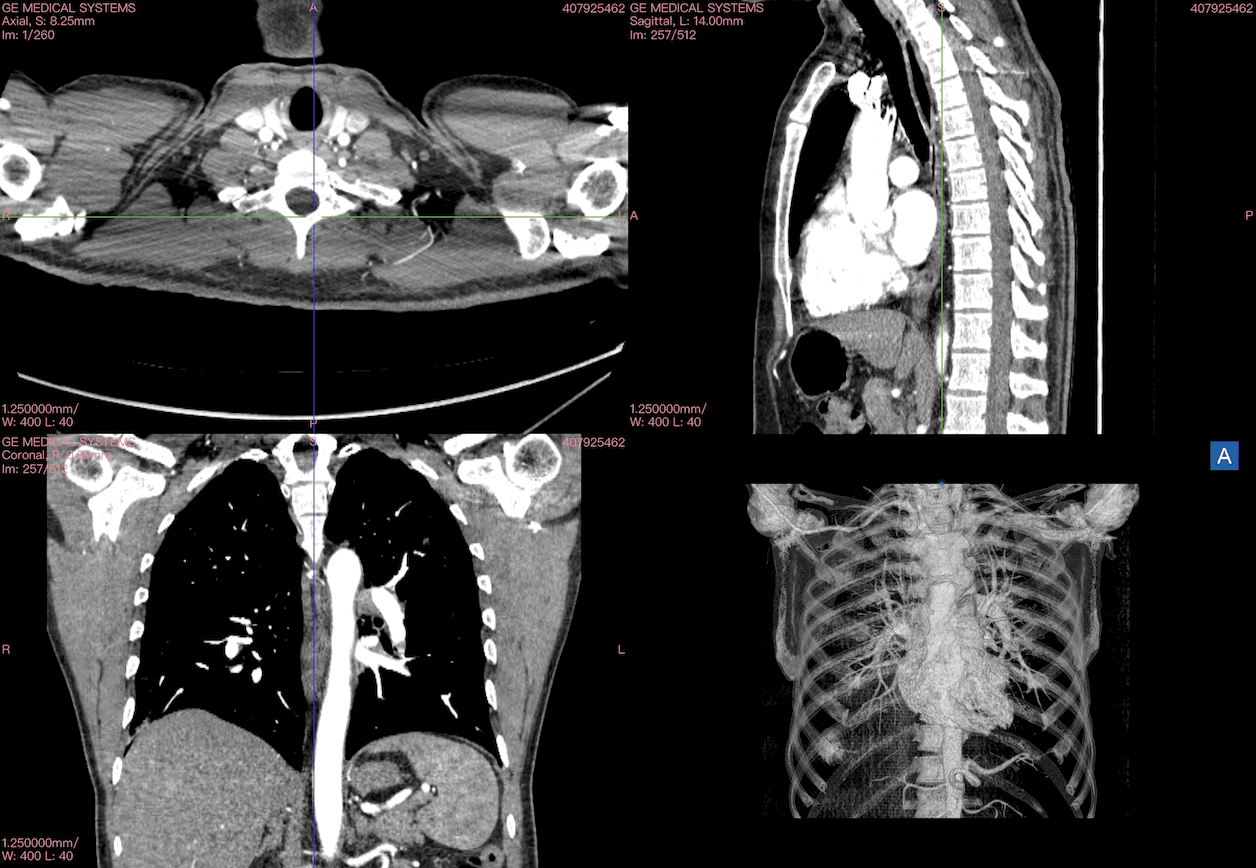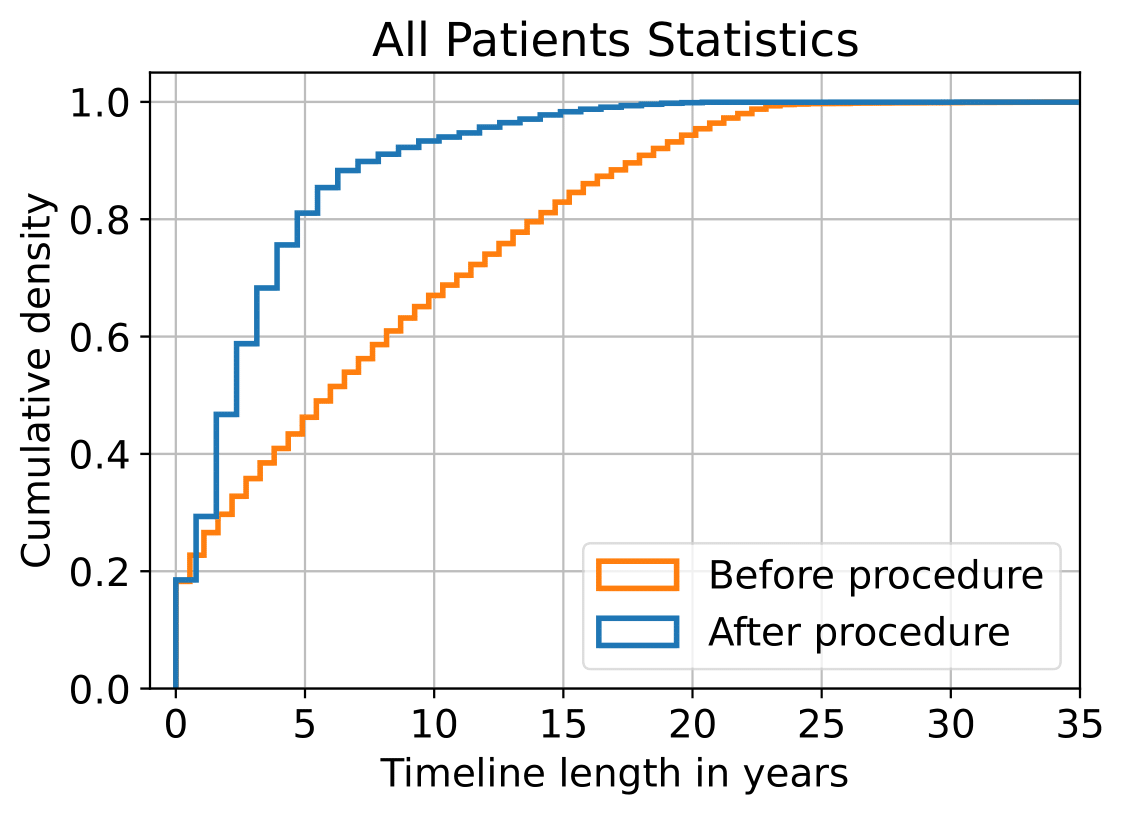
INSPECT
A Multimodal Dataset for Pulmonary Embolism Diagnosis and Prognosis
19,402
patients23,248
CTPA studies225+ million
medical events3
fully linked modalitiesTo address this limitation,
- We publish a new dataset, INSPECT (Integrating Numerous Sources for Prognostic Evaluation of Clinical Timelines), which contains de-identified longitudinal records from a large cohort of pulmonary embolism (PE) patients, along with ground truth labels for multiple outcomes.
- INSPECT contains structured data from the (1) electronic health record (EHR), (2) unstructured data from radiology reports, and (3) images from computed tomography pulmonary angiography (CTPA) scans. INSPECT is the first dataset to link these three modalities for a large cohort of patients.
- Using INSPECT, we develop and release a benchmark for evaluating several baseline modeling approaches on a variety of important PE related tasks, including both diagnosis and prognosis tasks. We evaluate image-only, EHR-only, and fused models.
- Trained models and the de-identified dataset are made available for non-commercial use under a data use agreement.

Overview
We collect the (1) electronic health record (EHR), (2) unstructured data from radiology reports, and (3) images from computed tomography pulmonary angiography (CTPA) scans from Stanford Hospital.

CTPA Demo
Multi-planer reconstruction for 3D volumetric data for one patient of INSPECT

Comparison to Prior Work
Most prior medical multimodal data are (1) limited to single modality and (2) only 1 case per patient (i.e., no longitudinal data). (3) no prognosis tasks. (4) limited size of cohort. (5) no benchmarking of models.
In contrast, INSPECT contains (1) the full breadth of longitudinal data that a health system would expect to have on the patients it treats; (2) all three modalities are linked to each patient/study. (3) contains both diagnosis and prognosis tasks (4) provides reproducible codes for benchmarking.
| Dataset | Imaging Modalities | Reports | EHR | #Patients | #Image Studies | Diagnostic Tasks | Prognostic Tasks |
|---|---|---|---|---|---|---|---|
| Open-I | Chest X-ray | ✅ | ❌ | 7,466 | ❌ | ❌ | |
| CheXpert | Chest X-ray | ❌ | ❌ | 65,240 | 224,316 | 14 | ❌ |
| MIMIC-CXR | Chest X-ray | ✅ | ✅ | 65,379 | 227,835 | 14 | ❌ |
| UK Biobank | Multiple MRI, DXA, Ultrasound | ❌ | * | 100,000 | Many | ❌ | ❌ |
| RSPECT | CT | ❌ | ❌ | 12,195 | 12,195 | 13 | ❌ |
| RadFusion | CT | ❌ | * | 1,794 | 1,837 | 1 | ❌ |
| INSPECT (Ours) | CT | ✅ | ✅ | 19,402 | 23,248 | 1 | 3 |
(* denotes partial availabilty).
Breath of longitudinal EHR data
INSPECT includes 9 STARR OMOP tables (STAnford Research Repository in Observational Medical Outcomes Partnership) to cover broad ranges of medical events, making it perfectly suitable to build medical foundation models.
| Table Type | Whole Cohort | Per Patient | |||
|---|---|---|---|---|---|
| # Records | Percentage | Median | Min | Max | |
| Measurement | 183,820,762 | (76.9%) | 3,783 | 0 | 500,368 |
| Drug Exposure | 17,288,279 | (7.23%) | 271 | 0 | 118,228 |
| Procedure Occurrence | 8,614,273 | (3.6%) | 190 | 1 | 35,926 |
| Condition Occurrence | 8,320,211 | (3.48%) | 148 | 0 | 27,480 |
| Visit Occurrence | 5,865,211 | (2.45%) | 126 | 1 | 16,336 |
| Visit Detail | 1,355,691 | (0.56%) | 23 | 0 | 4,840 |
| Device Exposure | 88,010 | (0.03%) | 1 | 0 | 682 |
| Person | 87,158 | (0.03%) | 4 | 1 | 48 |
| Death | 4,410 | (0.001%) | 0 | 0 | 13 |
| Total | 225,444,005 | (100%) | 5,080 | 7 | 741,873 |

Benchmarking the dataset
We construct a per-modality backbone benchmark and use a late fusion strategy to produce final prediction.

Check out the Leaderboard for up-to-date results.
Citation
@article{huang2023inspect,
title={INSPECT: A Multimodal Dataset for Pulmonary Embolism Diagnosis and Prognosis},
author={Huang, Shih-Cheng and Huo, Zepeng and Steinberg, Ethan and Chiang, Chia-Chun and Langlotz, Curtis and Lungren, Matthew P and Yeung, Serena and Shah, Nigam and Fries, Jason Alan},
journal={arXiv preprint arXiv:2311.10798},
year={2023}
}